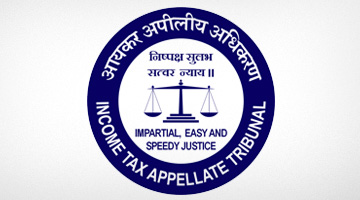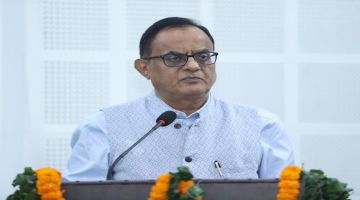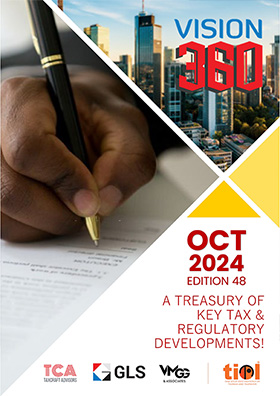I-T - Sharing of cost between husband & wife is no basis to allow exemption benefit u/s 54 to both of them upon transfer of jointly owned property, if sale deed recognizes only one of them as legal owner: ITAT
By TIOL News Service
BANGALORE, MAR 08, 2018: THE ISSUE BEFORE THE TRIBUNAL IS - Whether mere sharing of cost between husband & wife while purchasing a property, will entitle both of them to claim exemption benefits u/s 54 upon transfer of such property, when the sale deed recognizes only one of them as legal owner. NO IS THE ANSWER.
Facts of the case:
There are two Assessees, one being Shri Raghuram P Nambyar and his wife Smt. Veena Nambyar. Both of them had filed their returns for the relevant AY. In the course of assessment proceeding, the AO noted that Raghuram P Nambyar had purchased a vacant site in his name from one Dr. R. Syed Umar and thereon, a residential property was constructed in the FY 1991-92 and were residing there. Later, the said property was let out and the Assessees declared 50% of the rent received in their returns, and further claimed exemption for purchase of new residential property u/s 54F and for investment in bonds u/s 54EC. The return of Smt. Veena Nambyar was selected for scrutiny wherein, the AO observed that the name of Shri Raghuram P Nambyar was mentioned as seller but, nowhere there was mention of the name of Smt. Veena Nambyar. Therefore, the AO believed that Smt. Veena Nambyar was not the rightful owner of the said property. Further, the purchase deed showed that Smt. Veena Nambyar had share in purchase of the said property which were not furnished. Hence, the AO held that there were no income from Long Term Capital Gains in the hands of Veena Nambyar. The AO stated that the LTCG on sale of the said property was exigible to tax fully in the hands of Shri Raghuram P Nambyar only. Accordingly, the AO completed the assessment u/s 143(3) determining the taxable income of Shri Raghuram P Nambyar comprising only of the income declared under the head "Other Sources". Later, the AO initiated the assessment proceedings u/s 147 by holding that in the case of Smt. Veena Nambyar, the AO stated that the appropriation of LTCG on sale of the said property equally between both spouses @ 50% each was incorrect as the purchase and sale of the same was in the name of Raghuram P Nambyar only and therefore the LTCG arising from such sale was to be assessed in his hands alone. Accordingly, the AO issued notice u/s 148 and completed the assessment. On appeal, the CIT(A) confirmed the action of the AO.
Tribunal held that,
++ the findings rendered in the orders of the authorities is that, on the basis of the documents like sale or purchase agreements of the said property, Sri Raghuram P Nambyar is the sole owner of the said property, at every stage of purchase and sale thereof and therefore the LTCG arising on sale of the said property is to be assessed solely in his hands. The contention of both Assessees are that though in the sale deed transferring the property under subject matter does not mention or record the co-ownership of both of them, and records only Sri Raghuram P Nambyar as the sole owner; the purchase of the said property was effected by equal contributions by both of them. According to the Assessees, pursuant to the purchase of the said property, both husband and wife came into joint possession of the said property and thereafter in FY 1991-92, both of them jointly constructed the residence with equal contributions from both of them from out of their earnings and savings. It was also submitted by the Assessees that the rent received from letting out the said property was also equally shown in their respective hands as income from house property in the earlier year and the same has been accepted by the Department. Therefore, the Assessees concluded that the said property was a joint property and both of them having equal share therein, are both co-owners thereof. It is the assessee's contention that merely the purchase and sale deed stated the said property together with house constructed thereon was sold only in the name of Sri Raghuram P Nambyar, it does not take away the 50% right in the ownership and enjoyment of the property sold from Smt. Veena Nambyar;
++ the authorities after examining the relevant records have recorded the finding that in both the purchase and sale deed of the said property, only the name of Shri Raghuram P Nambyar is mentioned therein to establish that he was the sole legal owner of the said property. This finding of fact has not been controverted before this Tribunal by the Assessees with any evidence to the contrary. T his Tribunal believes that the mere fact that both the husband Shri Raghuram P Nambyar and wife Smt. Veena Nambyar have suo moto offered rental income equally in their returns of income, does not confer ownership in the said property on Smt. Veena Nambyar. As per the recitals in the purchase and registered sale deeds of the said property, Shri Raghuram P Nambyar alone is the sole legal owner of the said property to the exclusion of all others, including his wife Smt. Veena Nambyar whose name does not appear in the capacity of owner/co-owner in either the purchase or sale deed of the said property. Ownership has to be considered from the recitals of the relevant documents and not from any stated intention or claim made which is legally unsustainable. In this factual matrix of the cases on hand, there is no merit in the Assessee's contentions that Smt. Veena Nambyar had 50% ownership in the said property and was therefore entitled to claim and be allowed exemption u/ss 54 and 54 EC;
++ the Apex Court in the case of Poddar Cements P. Ltd. has settled the position for the purposes of offering income under the head "Income from House Property" for the purposes of Section 22 does not require registration of sale deed. In the case on hand, the matter of dispute is not with regard to the provisions of Sec. 22 and thus this decision is not applicable to the issue in the present case. It clearly spells out that "Owner" is the person who is entitled to receive the income from the property in his own right; a right to which Smt. Veena Nambyar is not entitled, but has accorded herself in connivance with her husband. This Tribunal believes that the said judicial pronouncements would not come to the rescue of the Assessees with regard to the issue of taxability of capital gains; whereby without any legal ownership whatsoever, a person i.e. Smt. Veena Nambyar in this instance, can be considered as owner and be given the benefits of exemption under Ss 54 and 54 EC. As per the recitals in the purchase and sale deeds, the sole owner of the said property is only her husband Shri Raghuram P Nambyar. The counsel for Assessee stated that Smt. Veena Nambyar had contributed to the purchase of the vacant site originally and also contributed an equal share towards the construction of the residential thereon. However, this claim is factually and legally untenable as at that time, admittedly, the Assessee Smt. Veena Nambyar was a Malaysian citizen employed in Saudi Arabia and could not have purchased any property in India without the permission of the RBI. No such permission of the RBI as required by law has been placed before the authorities or before this Tribunal. In this factual and legal matrix of the case, this Tribunal believes that Shri Raghuram P Nambyar alone is the purchaser and sole legal owner of the said property as confirmed by the recitals in the registered purchase and sale deeds;
++ certain amounts have also been found to be transferred from her account to that of her husband Shri Raghuram P Nambyar and others; but that the said transfers were for the purpose of construction of the residence, is not supported or corroborated by any bills to prove the Assessee's claim that they were utilized for construction. No documentary evidence in this regard has been placed either before the authorities or before this Tribunal. This being the factual position i.e. that Smt. Veena Nambyar is not the owner of the said property, the authorities have (i) rightly rejected her claims for exemption under Ss 54F and 54EC and (ii) correctly brought the entire LTCG arising on sale of the said property in the hands of the Assessee Shri Raghuram P Nambyar. Hence, there is no merit in the claims put forth by the Assessee in this regard and dismiss the same. Therefore, there was tangible material before the AO to form the reason to believe that income of the Assessee had escaped assessment. At the stage of initiation of proceedings it is not necessary that escapement of income need be established, but there should be formation of belief by a reasonable person based on relevant material. The AO has succinctly set out the facts of the case and recorded the reasons leading to the formation of belief that income of the Assessee liable to tax had escaped assessment for AY 2009-10, with due application of mind, following the prescribed procedure as contemplated by the Act and in consonance with the decisions of various Courts. In this factual and legal matrix of the case, there is no infirmity with the procedure adopted by the AO in initiating proceedings u/s 147.
(See 2018-TIOL-356-ITAT-BANG)















